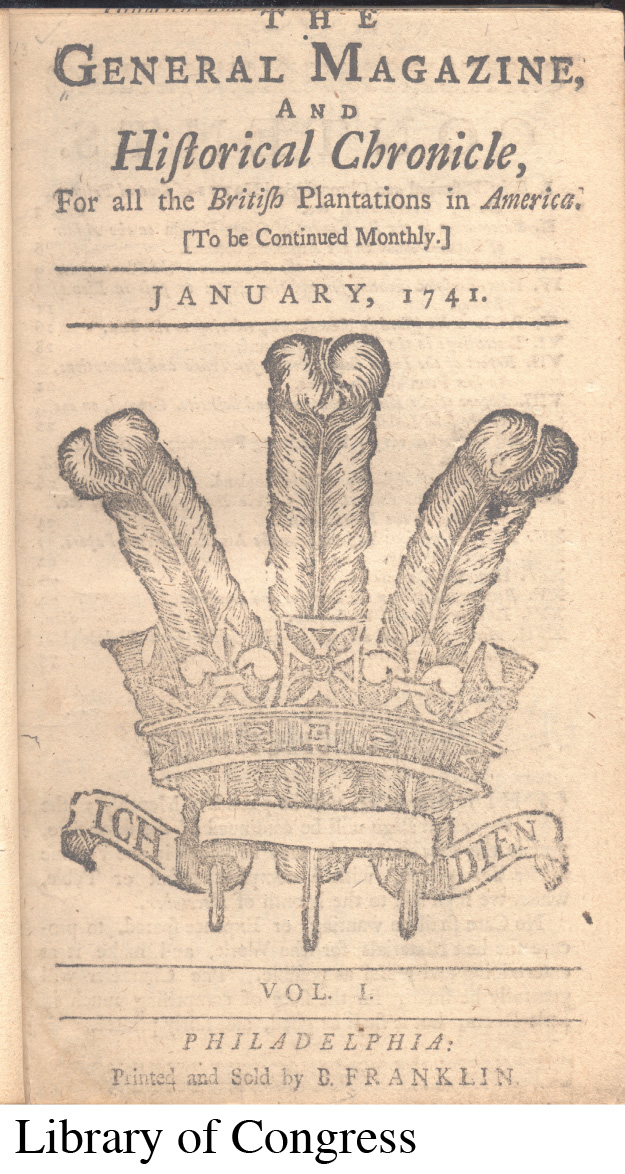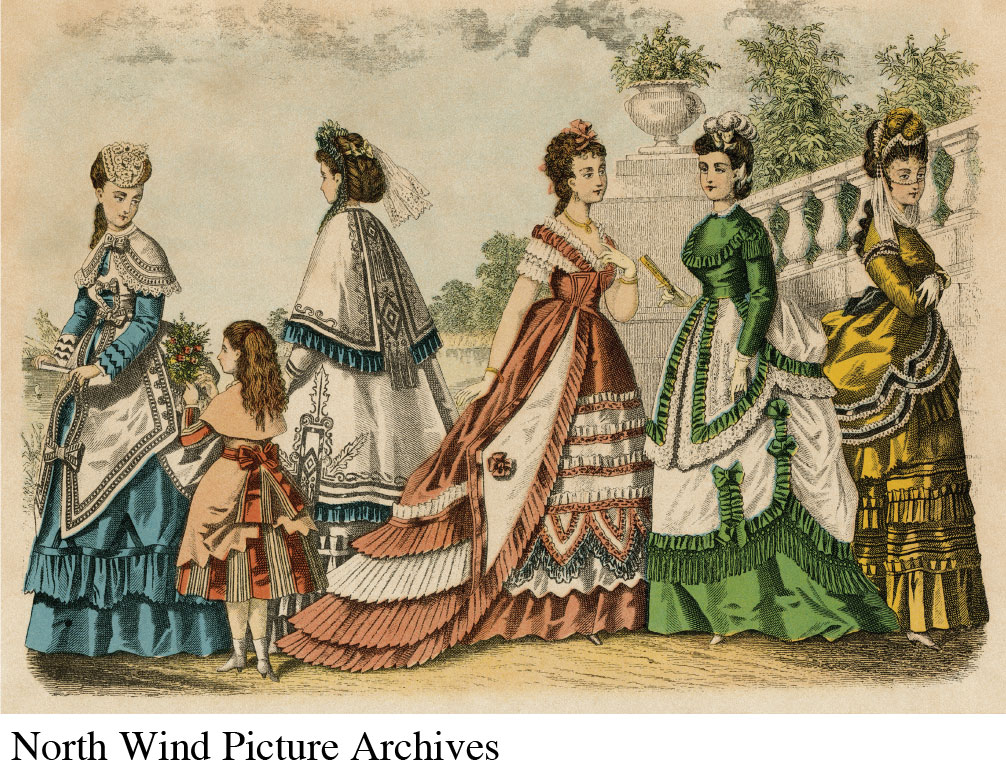The Early History of Magazines
Magazines have changed extensively during their journey to mass medium status. They started out in Europe as infrequently published periodicals that looked like newspapers and contained mostly political commentary. They caught on slowly in colonial America and served mostly as vehicles for politicians (such as John Adams and Thomas Jefferson) and thinkers (including Thomas Paine) to convey their views. It wasn’t until the nineteenth century that magazines really took off in America. During the 1800s, magazines took the form of specialized and general-interest periodicals that appealed to an increasingly literate populace, that could be published quickly through improved printing technologies, and that boasted arresting illustrations.
116
Today, the word magazine broadly refers to any collection of articles, stories, and advertisements published on a nondaily cycle (such as weekly or monthly) in the smaller tabloid style rather than the larger broadsheet newspaper style.
The First Magazines: European Origins
The first magazines appeared in seventeenth-century France in the form of bookseller catalogues and notices that book publishers inserted in newspapers. (In fact, the word magazine derives from the French term magasin, meaning “storehouse.”) In Europe, magazines then became channels for political commentary and argument. They looked like newspapers of the time, but they were published less frequently. The first political magazine, called the Review, appeared in London in 1704 and was printed sporadically until 1713.
Regularly published magazines or pamphlets, such as the Tatler and the Spectator, also appeared in England around this time. Offering poetry, politics, and philosophy for London’s elite, they served small readerships of a few thousand. The first publication to use the term magazine was Gentleman’s Magazine, which appeared in London in 1731 and consisted of articles reprinted from newspapers, books, and political pamphlets.
Magazines in Eighteenth-Century America: The Voices of Revolution
Without a substantial middle class, widespread literacy, or advanced printing technology, magazines took root slowly in America. Like the partisan newspapers of the time, colonial magazines served politicians, the educated, and the merchant class. However, they also served the wider purpose of conveying colonial leaders’ thoughts about the big questions percolating during the era—such as how taxation should work, how much self-rule the colonies should have, how Indians should be treated, and who should have access to public education. Magazines thus gave voice to the people who ultimately decided to break away from England and create a new, independent nation.
CHAPTER 4 // TIMELINE
1741 Colonial Magazines
First appearing in Philadelphia and Boston, these magazines mainly reprinted material from London newspapers.
1821 National Magazines
The Saturday Evening Post is launched, becoming the first major magazine to appeal directly to women and the longest-running magazine in U.S. history.
1850s Engravings and Illustrations
Drawings, woodcuts, and other forms of illustration begin to fill the pages of magazines.
1879 Postal Act of 1879
Both postal rates and rail transportation costs plummet, allowing magazine distribution to thrive.
Early 1900s Muckraking Magazines
McClure’s, Collier’s, Ladies’ Home Journal, and Cosmopolitan push progressive social reforms with their investigative reports.
1903 Ladies’ Home Journal
The magazine reaches a circulation of one million.
1922 Reader’s Digest
The pocket-size monthly will become the nation’s most popular magazine by 1946.
1923 Time
Time is launched and develops a new brand of journalism, in which stories are written in narrative form, with greater reliance on the reporters’ interpretations of events.
1936 Life
Life is launched and pioneers fashion spreads and advances in photo-journalism.
1953 TV Guide
TV Guide becomes an overnight success as a niche publication.
1965 Cosmopolitan
Editor Helen Gurley Brown turns Cosmopolitan into a leading magazine by targeting women ages eighteen to thirty-four with an interest in love, sex, fashion, and careers.
1969–1972 Shutdowns
The Saturday Evening Post, Look, and Life shut down; competition from television is a chief factor.
1974 People
The first successful mass market magazine in decades is published.
1998 ESPN The Magazine
The magazine launches, successfully capitalizing on the growing ESPN sports media empire.
2009 Recession
The economic recession leads to the closing of several leading magazines, including Country Home, Domino, Nickelodeon Magazine, Gourmet, Modern Bride, Portfolio, Teen, Vibe, and Blender.
2014 AARP Bulletin and AARP The Magazine
These subscription-only publications continue to boast the highest circulations of any magazines in the United States.

Click on the timeline above to see the full, expanded version.
117

The first colonial magazines appeared in Philadelphia in 1741, about fifty years after the earliest newspapers. Andrew Bradford started it all with American Magazine, or A Monthly View of the Political State of the British Colonies. Three days later, Benjamin Franklin launched his General Magazine, and Historical Chronicle.
Though neither of these experiments was successful, they inspired other publishers to launch magazines in the remaining colonies, beginning in Boston in the 1740s. The most successful of these periodicals simply reprinted articles from leading London newspapers to keep readers abreast of European events.
Magazines in Nineteenth-Century America: Specialization and General Interest
As the nineteenth century dawned, the magazine industry remained somewhat unstable in the newly created United States. During 1800–1825, about five hundred such periodicals had cropped up and then withered. However, as the century progressed, the idea of specialized magazines devoted to certain categories of readers gained momentum—leading to the creation of religious magazines, literary periodicals publishing the works of important writers of the day, and magazines devoted to professions such as law and medicine.

The nineteenth century also saw the birth of the first general-interest magazine aimed at a large national audience: the Saturday Evening Post, launched in 1821. Like most magazines of the day, the early Post included a few original essays but reprinted many pieces from other sources. Eventually, however, the Post grew to incorporate news, poetry, essays, play reviews, and the writings of popular authors such as Nathaniel Hawthorne and Harriet Beecher Stowe.
118
The Post was also the first major magazine to appeal directly to women through its “Lady’s Friend” advice column. This new device may have served as an inspiration; in 1828, Sarah Josepha Hale started the first magazine directed exclusively to a female audience: Ladies’ Magazine. In addition to general-interest pieces, such as essays and criticism, the periodical advocated for women’s education, work, and property rights. Other women’s magazines—including the hugely successful Godey’s Lady’s Book—would soon follow.
Going National as the Twentieth Century Approaches
Thanks to increases in literacy and public education, the development of faster printing technologies, and improvements in mail delivery (through rail transportation), demand for national (versus local) magazines soared. Whereas in 1825 a mere one hundred magazines struggled for survival, by 1850 nearly six hundred magazines were being published regularly, many of them with national readerships. Magazines were on their way to becoming a mass medium. Significant national magazines of this era included Graham’s Magazine (1840–1858), Knickerbocker (1833–1864), the Nation (1865–present), and Youth’s Companion (1826–1929).
The advent of illustration further moved magazines toward mass medium status. By the mid-1850s, drawings, engravings, woodcuts, and other forms of illustration had become a major feature of magazines and greatly heightened their appeal for readers. During the 1890s, magazines (and newspapers) also began including photographs with printed articles, helping to launch an entirely new profession: photojournalism.